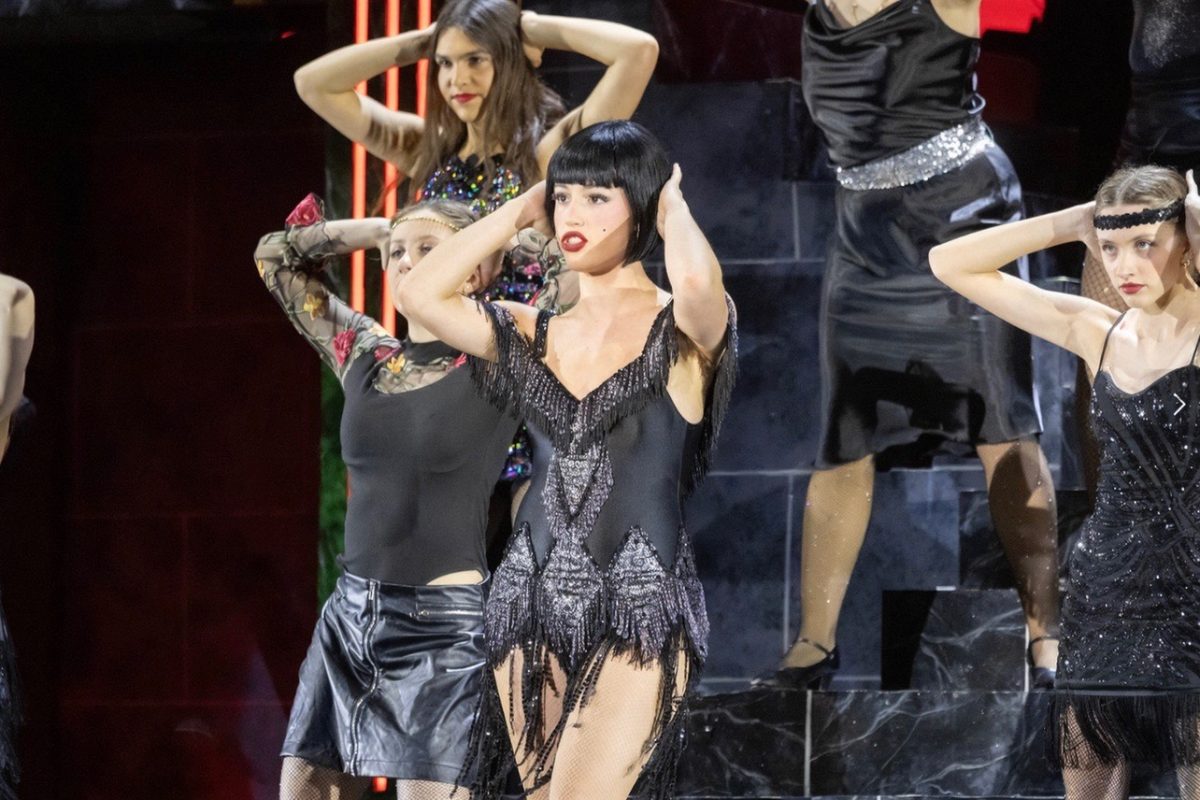Excitement runs through the TV studio late on a weeknight. The producers applaud as they finally finish editing the Glenbrook South Report (GBSR), junior Ava Iannucci, GBSR Executive Producer, described.
The GBSR is a monthly broadcast, presented to classes on Fridays, which is created by the Advanced TV and Film (ATV) students as part of their co-curricular, taught by Julie Benca, TV and Film teacher. Throughout the report, ATV showcases events and clubs that happen in South to the students, Benca said. The upcoming GBSR will release during block one classes on Feb. 16, Benca added.
“I hope that all the students are able to see the amazing things that other kids in the school are doing that they might not be a part of,” Benca said.
This upcoming GBSR will cover Titan Stars, the special education dance and cheer team, along with Key Club’s International night, and the Academic Bowl, Iannucci explained. Combining all the different topics included in GBSR, also known as packages, in the end with the GBSR team is the best part, Iannucci said.
My favorite part is working together,” Iannucci explained. “We meet on a Wednesday, [the week before GBSR releases], and we just work from 3:30 [p.m.] to sometimes 7:30 [p.m.] just editing the whole thing together. It’s really fun. We have a great team.”
To create the report, the executive producers have to contact sponsors depending on which club, activity, or event GBSR is reporting, senior Ariana Tomasek, GBSR Executive Producer, said. Additionally, they interview sources are interviewed and film footage, known as B-Roll, is filmed, she explained.
Through the production of the GBSR, students develop numerous skills in the production process such as creating questions for interviews, capturing footage, editing, forging what they’ve collected into a story, Benca said. Once completed, transmitting stories into a visual format allows students to view what is happening, visually, Benca said.
“Seeing what it looks like to be a member of the fall play, how they interact as a cast, [or] seeing the expression on people’s faces when they’re at Battle the Bands and they win; those types of things are really fun to see visually,” Benca said. “[Things like] the action, the emotion, and the story.”



![LEFT, RIGHT, CENTER: Members of the Drama Club gather in the drama room to block their scenes for their incoming production as part of the Glenbrook Story Project. [Left to right] sophomore Riley Talbot, senior Lukas House, and senior James Dravenack act out a scene called Dragon House Carnival.](https://theoracle.glenbrook225.org/wp-content/uploads/2025/05/MG_4193-800x1200.jpg)


